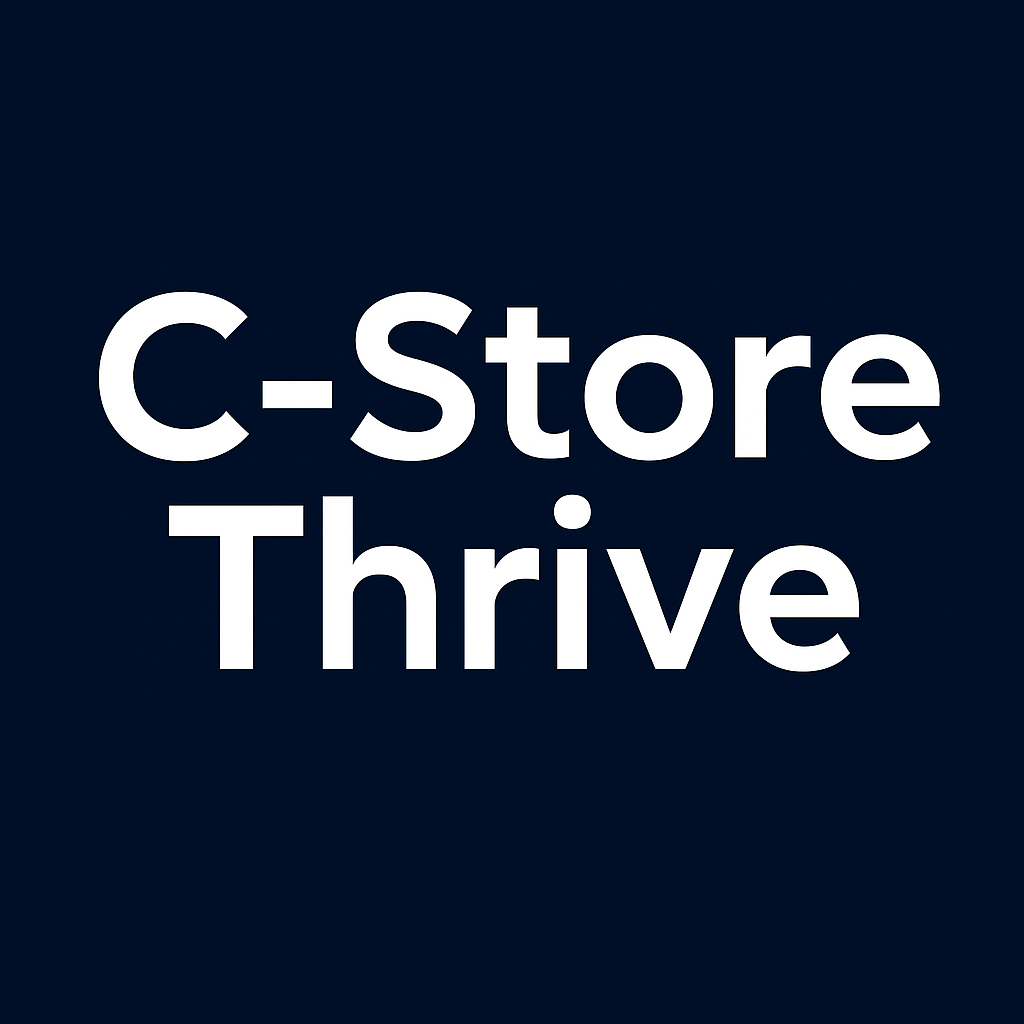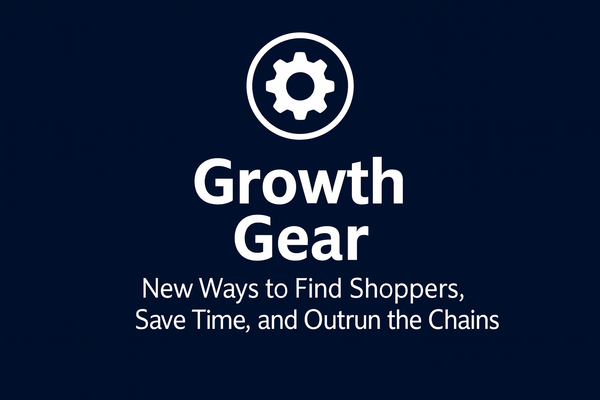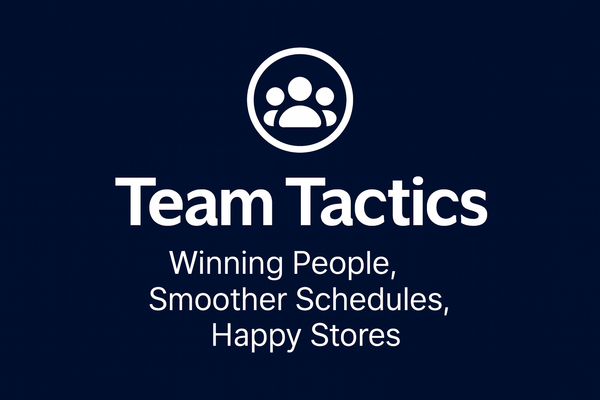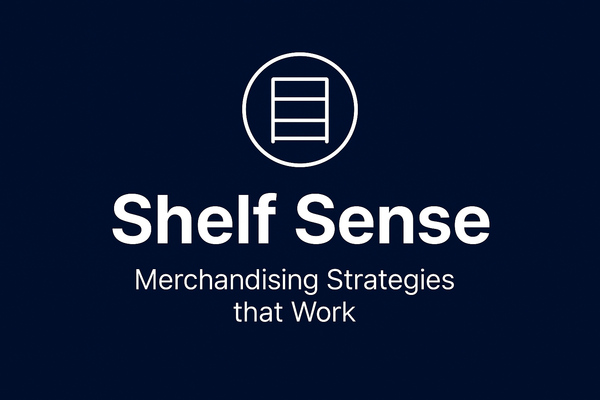Building Something Better: How Store Culture Starts with Every Employee
When Gabriela Restrepo started her first shift at Survival Stop, the atmosphere hit her like a brick wall. Employees barely spoke to each other, customers were treated like interruptions, and everyone seemed to be counting minutes until quitting time.
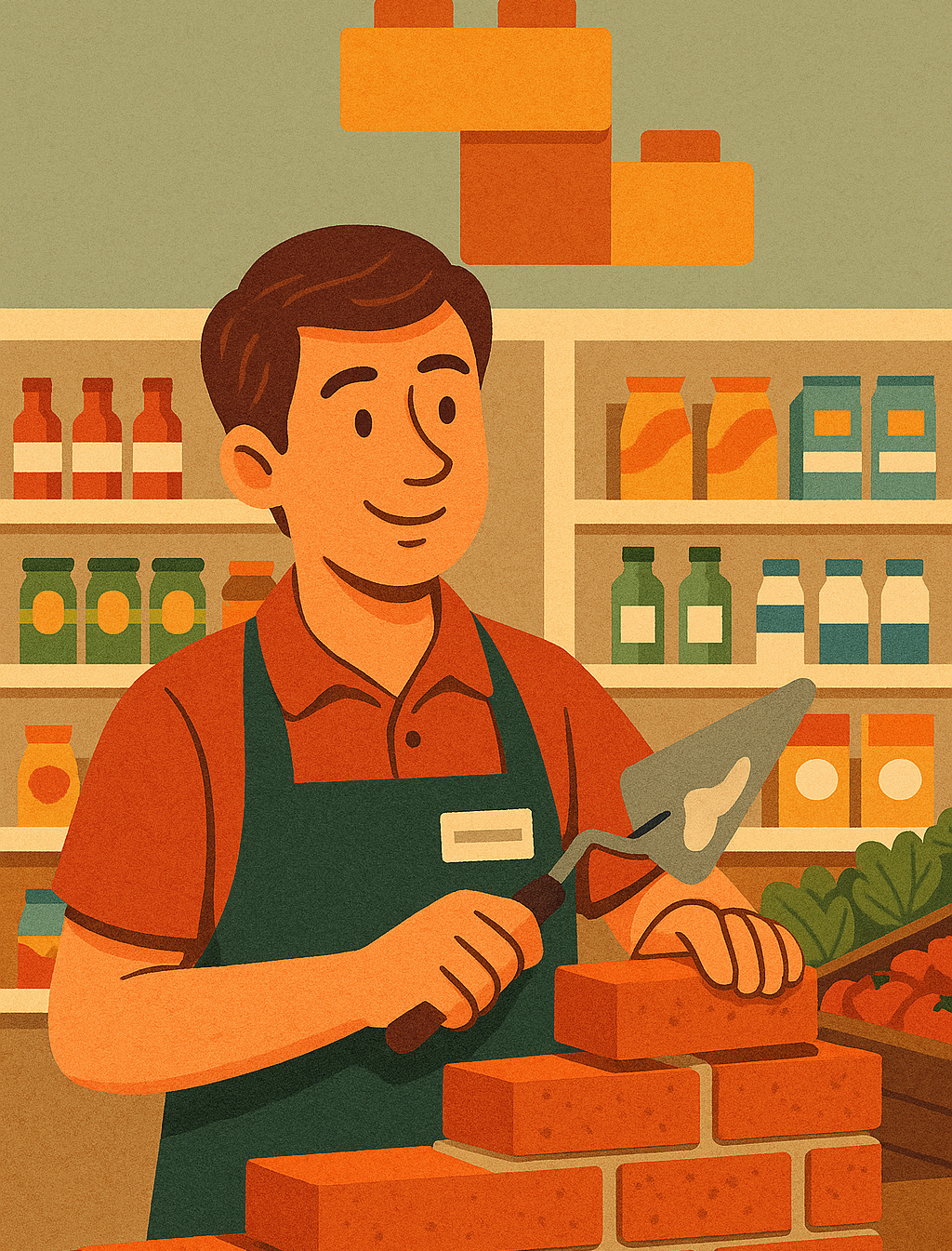
When Gabriela Restrepo started her first shift at Survival Stop, the atmosphere hit her like a brick wall. Employees barely spoke to each other, customers were treated like interruptions, and everyone seemed to be counting minutes until quitting time. The previous night-shift worker handed over the keys with a grunt and bolted for the door without saying a word.
"It was like working in a morgue with slushie machines," Gabriela recalls. "Nobody smiled, nobody helped each other, and customers picked up on the bad vibes immediately. I almost quit after three days because the environment was so toxic."
But something changed when Declan Murphy joined as assistant manager six months later. He started small—saying good morning to everyone, helping out during rushes, and actually listening when employees had problems. Slowly, other staff members began following his lead. Within a year, the same store became known for its friendly atmosphere and teamwork.
"The transformation was incredible," Gabriela explains. "Same building, mostly the same people, but completely different energy. Customers started commenting on how pleasant we were, and honestly, coming to work stopped feeling like punishment."
Culture Isn't Corporate Fluff—It's Daily Reality
Store culture affects every aspect of convenience store operations, from customer satisfaction to employee turnover to profitability. But culture isn't something that gets created in corporate boardrooms—it develops through thousands of daily interactions between real people working together.
Customer perceptions reflect store culture immediately. Shoppers can sense whether employees enjoy working together or barely tolerate each other. Happy staff create welcoming environments that encourage repeat visits and longer shopping times.
Employee retention correlates directly with workplace culture. People quit bad managers and toxic environments far more often than they leave for better pay elsewhere. Positive cultures reduce turnover costs and maintain experienced teams.
Operational efficiency improves when employees willingly help each other instead of strictly guarding their individual responsibilities. Teamwork prevents bottlenecks and ensures smooth operations during busy periods.
Meredith Blackwood learned this during her store's culture shift: "Before our culture improved, we had 90% annual turnover. People would last three months max. Now, most employees stay over a year, and our customer satisfaction scores are consistently top in the district. The connection isn't coincidental."
Small Actions, Big Impact
Creating positive store culture doesn't require grand gestures or major policy changes. Often, the most powerful culture shifts start with individual employees making small improvements in daily interactions.
Greeting each other sets the tone for entire shifts. When team members acknowledge each other positively at the beginning of shifts, it creates momentum for cooperation throughout the day.
Helping without being asked demonstrates that everyone's success matters. Jumping in during rushes, restocking items that aren't "your responsibility," or covering brief breaks builds mutual support.
Celebrating small wins keeps morale positive during challenging periods. Recognizing when someone handles a difficult customer well or completes a tough task creates shared pride in good work.
Sharing information instead of hoarding it helps everyone succeed. Teaching new employees shortcuts, warning about problem customers, or explaining policy changes builds team knowledge.
Tariq Abdullah's approach illustrates individual impact: "I started bringing coffee for whoever worked the morning shift before me, just as a nice gesture. Pretty soon, other people were doing small favors, too. It sounds cheesy, but those little kindnesses really changed how we all felt about being there."
The Contagion Effect: How Attitudes Spread
Both positive and negative attitudes spread quickly in small workplaces like convenience stores. Understanding this contagion effect helps employees make conscious choices about the energy they bring to work.
Complainers create complainers when negative attitudes go unchallenged. One person constantly griping about management, customers, or policies can poison entire shifts if others join the negativity spiral.
Enthusiasm generates enthusiasm when people see colleagues enjoying their work and taking pride in doing things well. Positive energy motivates others to match that level of engagement.
Problem-solving mindsets spread when employees focus on solutions rather than just identifying issues. Teams that habitually ask, "How can we fix this?" instead of "This sucks," develop stronger cultures.
Ingrid Larsen noticed this pattern during her store's improvement: "We had one employee who complained constantly about everything—schedules, customers, management, the weather. Once he left, the whole atmosphere lightened up. Conversely, when we hired someone with a genuinely positive outlook, other people started being more upbeat too."
Communication: The Foundation of Everything
Effective communication forms the backbone of positive store culture, but many convenience store employees never learn basic workplace communication skills.
Direct but respectful conversation prevents small issues from becoming major conflicts. Addressing problems early and honestly keeps resentment from building up over time.
Active listening shows respect for colleagues' perspectives and experiences. Really hearing what teammates say builds trust and prevents misunderstandings.
Constructive feedback helps everyone improve without creating defensiveness. Learning to suggest improvements positively rather than just criticizing builds stronger teams.
Information sharing keeps everyone informed about changes, policies, and important updates. When people feel "in the loop," they're more likely to support decisions and changes.
Jorge Sánchez's communication transformation shows the impact: "I used to just ignore problems and hope they'd go away. But when I started actually talking to coworkers about issues, most conflicts resolved easily. Turns out, people usually want to work together—they just need clear communication."
Supporting New Employees: Everyone's Responsibility
How stores treat new employees sets culture tone immediately. When experienced staff help newcomers succeed, it creates environments where everyone feels valued and supported.
Patience during training recognizes that everyone learns at different speeds and in different ways. Rushing new employees or showing frustration with questions creates anxiety and poor performance.
Sharing practical knowledge helps newcomers navigate unwritten rules and informal systems that experienced employees take for granted. This includes customer quirks, equipment tricks, and workflow shortcuts.
Emotional support during challenging early days helps new employees feel welcome and capable. Starting new jobs is stressful—small encouragements make huge differences.
Integration into team dynamics involves including new people in conversations, breaks, and informal interactions rather than leaving them isolated.
Amara Okafor reflects on her onboarding experience: "The first store I worked at, nobody talked to me for two weeks except to correct mistakes. I felt terrible and quit quickly. At my current job, people went out of their way to help me learn and feel welcome. That difference made me want to pay it forward with other new hires."
Handling Difficult Situations Together
How teams respond to challenges—difficult customers, equipment failures, policy changes, or busy periods—reveals and shapes store culture. Positive cultures emerge when people support each other during tough times.
Sharing difficult customers prevents any one person from bearing the full burden of dealing with problem shoppers. Tag-teaming difficult situations reduces stress and provides backup when needed.
Collaborative problem-solving during equipment issues or system failures builds team resilience. Working together to find solutions creates shared ownership of outcomes.
Mutual support during rushes ensures everyone contributes to handling busy periods rather than leaving individuals overwhelmed while others watch.
Decompressing after incidents allows teams to process difficult situations together and learn from challenging experiences.
Nikolai Petrov's team approach demonstrates collective resilience: "We had a regular customer who was incredibly rude and demanding. Instead of leaving whoever was on register to deal with him alone, we developed a system where someone else would come help or distract him while the cashier finished the transaction. Made those situations way more manageable."
Recognition and Appreciation: Beyond Paychecks
People need to feel valued and appreciated for their contributions, especially in jobs that often feel underappreciated by society. Creating cultures of recognition doesn't require formal programs—it needs genuine acknowledgment of good work.
Peer recognition often means more than manager praise because it comes from people doing the same work under the same conditions. Colleagues acknowledging each other's efforts builds mutual respect.
Specific appreciation for particular actions or improvements carries more weight than generic "good job" comments. Noticing when someone handles a situation especially well shows attention to their efforts.
Celebrating team achievements builds collective pride in shared accomplishments. When stores hit sales goals, improve customer scores, or complete difficult projects, acknowledging everyone's contributions strengthens bonds.
Zara Hassan's recognition philosophy shows practical application: "I make it a point to notice when coworkers do something well and tell them specifically what I appreciated. Like when someone stays calm with an angry customer or figures out a creative solution to a problem. People light up when they know their efforts are seen."
Managing Conflicts Before They Explode
Workplace conflicts are inevitable when people spend lots of time together under sometimes stressful conditions. Positive cultures develop healthy ways to address conflicts before they poison team dynamics.
Early intervention addresses tension before it escalates into major problems. Recognizing signs of conflict and encouraging conversation prevents issues from festering.
Neutral mediation helps when coworkers can't resolve differences directly. Sometimes, having a third party facilitate discussion helps people understand each other's perspectives.
Focus on solutions rather than blame keeps conflict resolution productive. Asking "How can we prevent this in the future?" instead of "Who's fault is this?" builds better outcomes.
Professional boundaries help separate work relationships from personal conflicts. People don't have to be best friends, but they need to work together respectfully.
The Ripple Effect: Culture Beyond Work
Positive store cultures often extend beyond work hours, creating genuine friendships and support networks that enrich employees' lives in multiple ways.
Mutual support during personal challenges helps team members navigate difficult life situations with workplace understanding and flexibility.
Shared experiences outside work build stronger bonds that translate into better workplace cooperation and communication.
Career development happens when colleagues help each other grow professionally through skill sharing, recommendation writing, and opportunity identification.
Fatima Benzakour's experience illustrates extended benefits: "When my car broke down, three coworkers offered rides until I could get it fixed. When someone's having childcare issues, we try to trade shifts. These aren't work requirements—they're what good teammates do for each other."
The Long Game: Sustaining Positive Change
Building positive store culture takes time and consistent effort. Sustainable culture change requires ongoing attention and reinforcement, not just initial enthusiasm.
Consistent behaviors over time prove that culture changes are real rather than temporary initiatives. People need to see that positive changes persist through different situations and challenges.
New employee integration ensures culture improvements survive staff turnover. Teaching cultural values to new hires prevents backsliding when team composition changes.
Continuous improvement means culture building never really ends. Successful teams keep looking for ways to make their workplace better and more supportive.
The Bottom Line for Store Employees
Every convenience store employee has the power to influence workplace culture through their daily choices and actions. Culture isn't something that happens to employees—it's something they create together through countless interactions.
"I used to think culture was management's job," reflects Olatunji Adebayo, whose leadership helped transform his store's reputation. "But I realized that every person shapes the environment through how they treat customers and coworkers. Once I started acting like the kind of coworker I wanted to work with, other people began doing the same thing."
For convenience store employees, investing in positive culture pays dividends in job satisfaction, workplace relationships, career development, and daily quality of life. The energy spent building supportive environments returns multiplied through better teamwork, reduced stress, and genuine pride in workplace accomplishments.
Creating positive store culture from the ground up isn't about grand gestures or formal programs—it's about treating colleagues with respect, supporting each other during challenges, communicating honestly, and taking pride in doing good work together. When employees commit to these principles, extraordinary transformations become possible in even the most ordinary workplace settings.
